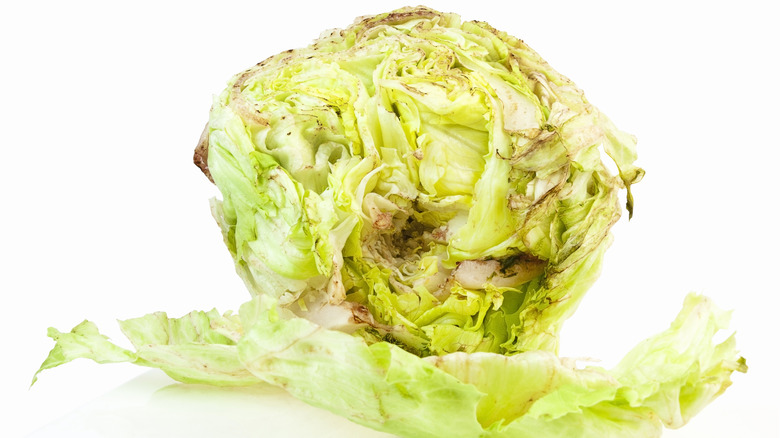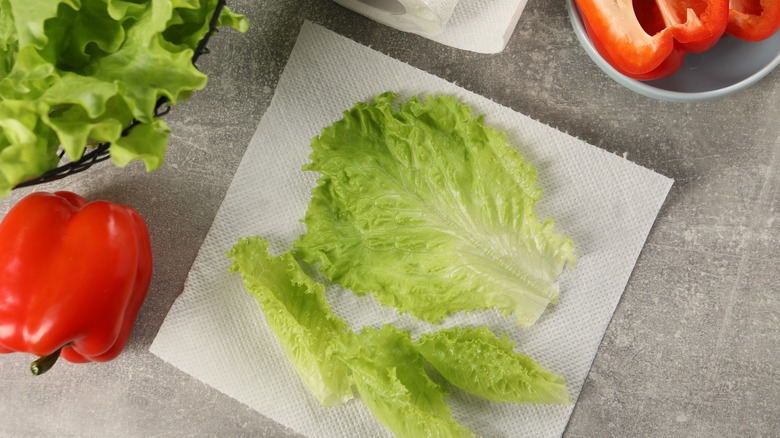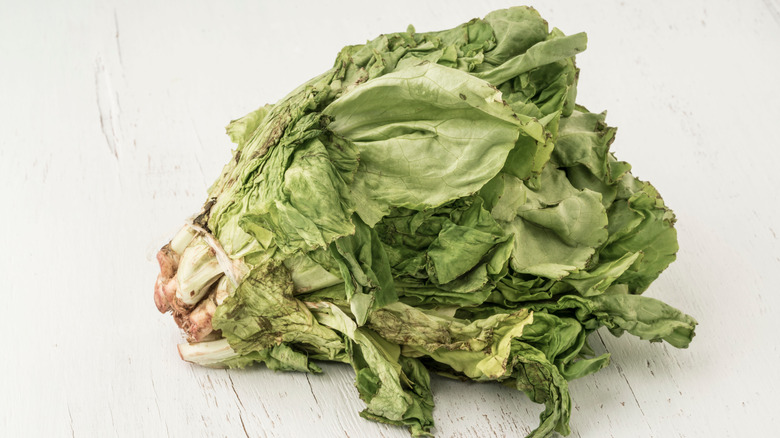Is It Safe To Eat Rusted Lettuce?
Many of us have experienced the phenomenon that is known as rusty-looking lettuce. Needless to say, it can be a bit disconcerting to see orange spots taking over your supposedly fresh produce, which can bring up a few questions: Is this discoloration normal? What causes it? Can you safely eat rusted lettuce?
Though this change in color may seem to come on quickly, it is indeed perfectly normal. Exposure to ethylene gas — produced naturally by apples, bananas, and several other fruits as they ripen — is also what prompts lettuce to ripen more quickly. Simultaneously, ethylene also triggers lettuce to release phenolic acids, which give off a rusty-orange color. Rusting around the root of a head of lettuce can also happen as a response to excess moisture in its surroundings.
Either way, rusted lettuce is completely safe to eat, so long as the discoloration is the only change in appearance. Of course, if it's too unappetizing, you can simply remove the rusted parts, and eat only what's still green.
How to prevent lettuce from rusting in the first place
While rusted lettuce is perfectly normal, you can minimize its appearance by rectifying a few food storage mistakes. For one, you should always store your lettuce safely and apart from any ethylene-producing fruits and veggies, including avocados, bananas, apples, tomatoes, and peppers. You should also avoid storing lettuce in plastic or airtight containers, as these can trap those gasses inside, accelerating the ripening (and rusting) process as air flow is crucial to keeping greens fresh and green.
By a similar token, storing lettuce in sealed, non-absorbent wrappings can also trap moisture. In turn, that moisture can prompt discoloration, wilting, and even bacterial growth. But, you can limit moisture build-up by refraining from washing produce until right before you use it and by wrapping lettuce heads with paper towels in such a way that they still have air circulation. As well, keep lettuce in the crisper drawer if possible, as this particular location has the ideal temperature and humidity for your leafy produce.
Determining if your lettuce has actually gone bad
While rusty discoloration by itself is not a sign of lettuce spoilage — similar to if your lettuce has turned pink — you should check for other changes, such smell and texture, to determine if your lettuce is still edible. For instance, if a change in color is accompanied by wilting and a sliminess of the leaves, you should toss the lettuce in the trash or compost. That slime is proof in and of itself that it has begun decomposing. Likewise, if the head has taken on a strong, pungent smell, it has definitely started to go bad.
As far as bacteria goes, you should always assume lettuce is dirty (in other words, don't believe labels saying your produce has been triple-washed). Be sure to rinse and dry the leaves before consumption, and keep both your hands and work space clean. The likes of E. coli, salmonella, and norovirus may not leave visible marks on your lettuce, but they can have detrimental effects on your health. A good rule of thumb to follow is if you're ever unsure of lettuce's quality, just throw it out.



